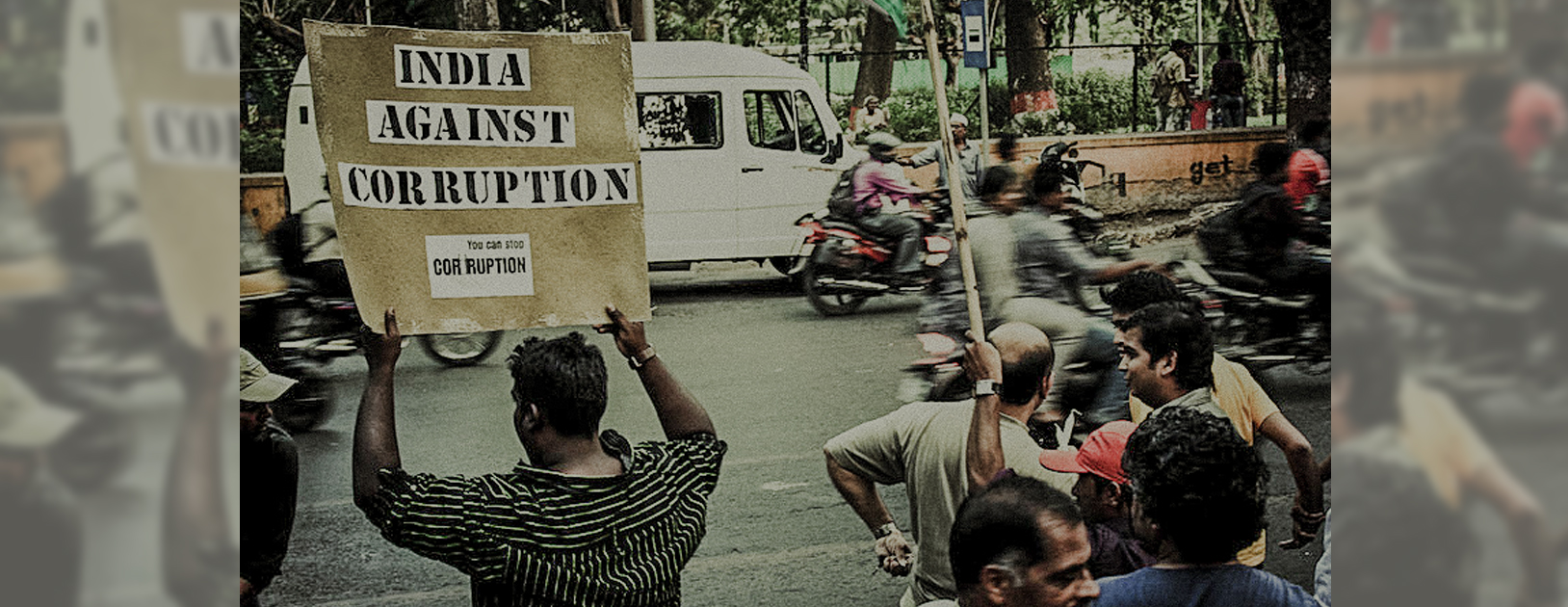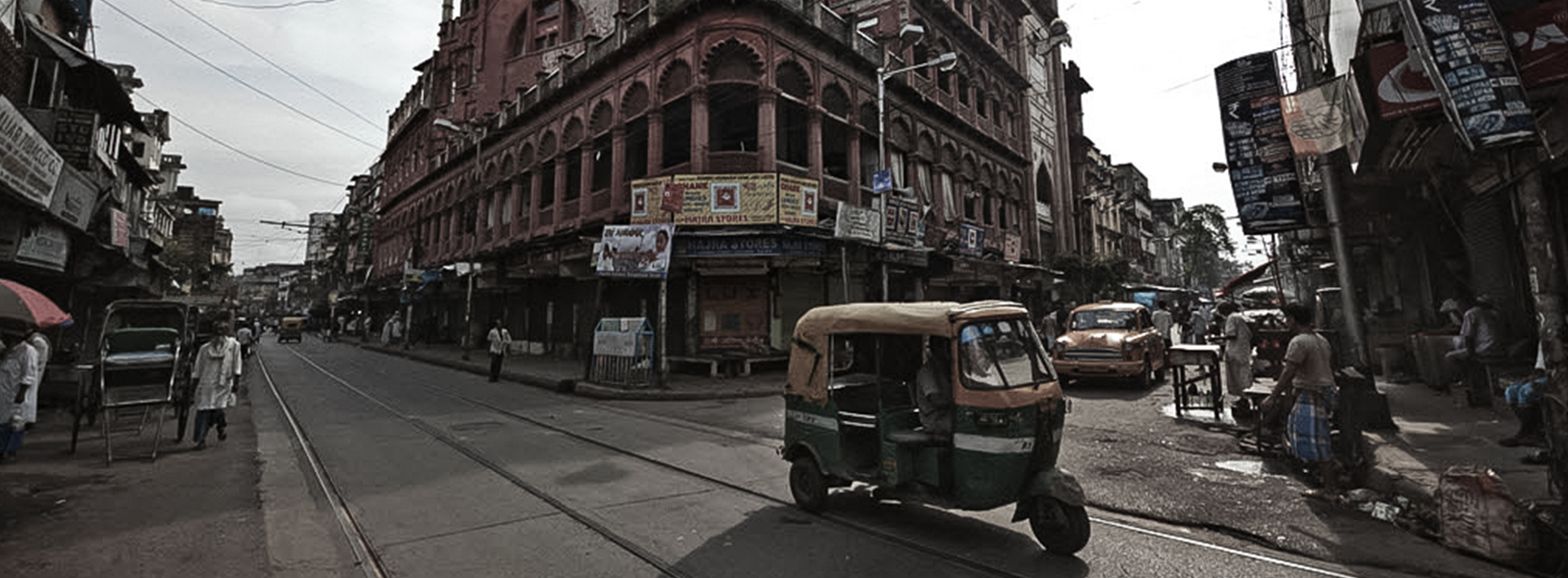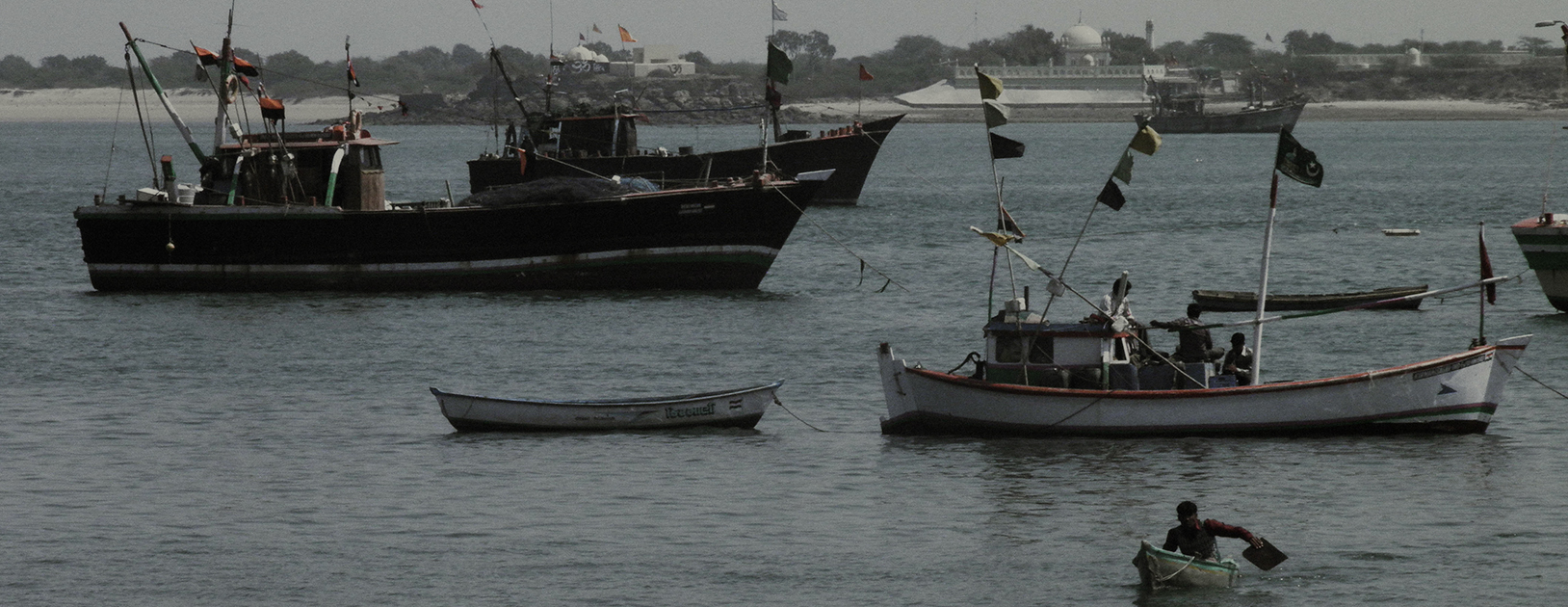The new national government begins its term against the backdrop of an agricultural sector estimated to be growing at just around 2 percent, a poor rabi season across many regions of the country, and a period marked by the collapse of farm gate prices across numerous commodities. It is estimated that farm incomes might be growing at the slowest pace seen over the last fifteen years1, even as there is a renewed policy vision of doubling them in a short span of time.2 After a long season of repeated protests by farmers, agrarian distress remains very much in the spotlight.
The policy debate was initially dominated by the two longstanding demands of farmers’ movements: higher, guaranteed Minimum Support Prices (MSPs) and farm loan waivers. More recently, the political focus has centred on the promise of introducing income support transfers for farmers and the rural poor, with a range of state and national schemes having been proposed and rapidly rolled out in the field. While these schemes deserve close attention, a much more urgent need is to take a comprehensive and systemic approach to agriculture. This must include prioritising the deep challenge of reforming India’s agricultural markets. Not only are agricultural markets a central element of the larger strategy to support and improve farmers’ incomes, they are at the very heart of Indian development and the dynamics of growth, distribution and equity. Agricultural commodity markets are the connective tissue in the economy: connecting agricultural production, circulation and consumption, interlinking livelihoods and logistics across the agrarian and non-agrarian sectors, shaping the relations between cities, small towns and villages, and those between local and regional markets for commodities and larger, national and global circuits of capital and commerce. There is therefore every reason to build on the existing momentum, knowledge and experience to forge a genuinely national agenda to reform India’s agricultural markets.
Importantly, this time there is a unique context that has opened up for the pursuit of such reform: the ambition to create a National Agricultural Market (NAM). Indeed, this is an idea that has featured in policy documents over the last few years, dating back to 11th and 12th Plan mid-term reviews and task groups. It subsequently featured in the Union Budget in 2014 and 2015, and was finally launched by the Central Government in the form of eNAM in April 2016.3
Historically, the regulation of agricultural markets in India, especially at the primary level where farmers sell their produce, has come under state legislative acts and under the management of local market committees. As such, they are characterised by variation and fragmentation across regions and commodities systems. The move towards designing and facilitating a national market for agricultural commodities is therefore a transformative shift. However, eNAM, envisioned as ‘a pan-India electronic trading portal which networks the existing APMC mandis to create a unified national market for agricultural commodities’ has led into this ambitious effort with a singular focus on getting select local mandis trading online.4 Even so, the process of trying to get eNAM off the ground has forced, at least to some extent, a deeper engagement with existing physical markets and the varying conditions under which they operate. This has made it quite apparent that if the vision behind a National Agricultural Market is to be realised, we need to start from the back-end first. For this to happen, the central government needs to take both a more contextual and more comprehensive approach to market reform.
Going back from the Dashboard to the Drawing Board
In its first phase of implementation, the eNAM scheme is reported to have networked 585 APMC mandis across 18 states.5 Of these, less than half (252 mandis) have shown evidence of any level of online trading activity.6 Field reports, including the findings of a high-level Government-appointed Expert Committee, provide a sense of the numerous challenges the initiative is facing on the ground.7 In many cases, computer terminals have remained in their boxes; in others, data from offline auctions or government procurement has been retrospectively entered into the e-NAM portal; some mandis have avoided moving high-volume commodities online due to delays in facilitating exchange; others only use e-NAM on a single day of the week or off-season before reverting to business as usual; and across the board there have been few takers for assaying and quality specification, with testing equipment remaining widely unused. In states where regulated markets are not the primary channel for local marketing and trade, mandi functionaries have struggled to attract buyers and sellers into market yards, let alone getting them to bid online. Where mandis are in fact dynamic hubs for local trade, open auctions or manual tendering are not always conducted in the first place or for all commodities; in such cases, moving buyers and sellers from no auctions to e-auctions is not an easy task. And even when auctions are common practice, enforcing a system of direct electronic payments for all transactions is a significant challenge for farmers, traders and commission agents with prior histories of credit advances and cash rotations. 8
All this is not to say that electronic auctions and other price discovery mechanisms on a trading platform that enables both local and long-distance buyers to bid on farmers’ produce is an inconceivable enterprise. On the contrary, there is little doubt and growing evidence that farmers and traders across the country are capable of integrating digital technology and online platforms into their marketing practices.9 It does, however, force us to contend with the reality that agricultural markets are at once highly specific, diverse and differentiated in terms of their structure and organisation—across agro-ecological regions, land regimes, socio-economic groups, commodity systems, agro-commercial networks, and regulatory histories and priorities.10 For instance, different commodities cultivated in the same field follow diverse post-harvest pathways of exchange, trade and processing. The same commodity also typically moves across different states and even within the same state through different channels and intermediaries, a significant proportion of which are not formally regulated. When it comes to regulation itself, there is no single agricultural marketing act across states, some states don’t have an act at all, and even a single state act is differentially implemented (and sometimes left largely unimplemented) across districts, blocks and commodities. Moreover, a great deal of regulatory work in agricultural markets doesn’t happen through legislative acts but through the issuing of ad hoc government orders and even more extensively through informal (but often highly organised) industry associations and trading networks. In this context, building a National Agricultural Market cannot begin or end with electronic integration: it requires an enormous degree of field-based data and analysis; significant institutional, infrastructural and logistical investment; and deep regulatory reform, synchronisation and capacity building.
Learning from the first phase of e-NAM implementation, there is a need for a reorientation in the approach: states should not have to ‘plug into’ the e-NAM via a software; instead, they have to substantively buy into and participate in the process of creating a National Agricultural Market.
The challenge of reforming agricultural markets
Agricultural marketing reform is the proverbial ‘hot potato’: vital, visible, and politically volatile. When it comes to taking on major regulatory and policy reforms to open up and invest in agricultural markets, there are two key sources of resistance that are usually raised.
First, historically, the local traders, commission agents and regional processors who have, in different regions and periods, gained from the dominant regulatory regime often exercise considerable local and regional political power. This makes it very difficult for state governments to initiate and sustain deep and wide-ranging reforms to open up agricultural markets to competition. Moreover, in many cases, these same market actors work across input and output markets, while also financing (through credit) both agricultural production and household consumption, making them especially difficult to dislodge through isolated or piecemeal market interventions.
The second is the political purchase of the Minimum Support Price (MSP) and procurement, the most publicly prominent means of state protection of farmers in markets. But we know that in the vast majority of states and commodities across the country where MSPs are not backed by procurement operations, their declaration has no effect on the prices that farmers receive for their produce.11 In the two states where the government has grown over the decades to become virtually the only buyer (i.e. wheat and paddy in Punjab and Haryana), it has effectively diminished or destroyed market competition—and crop diversification, reducing mandis largely to the role of seasonal procurement centres. And in states where public procurement is only partially and differentially implemented, it has tended to drive private trade undercover, generally to the detriment of those farmers who are already structurally constrained and unable to sell to state agencies for a variety of reasons (tenant farmers, sharecroppers, and farmers in regions where procurement mechanisms are weak). Moreover, public procurement has often ended up strengthening the hand of the commercially and politically powerful in regional markets by routing procurement through intermediaries (e.g. arhatiyas/commission agents in Punjab)12 or agro-processors (e.g. rice millers in West Bengal).13
These, then, have been the intended and unintended political consequences of state action—or as often, state inaction—in regional agricultural markets. However, they cannot continue to serve as reasons for resisting market reforms. There is now significant evidence to suggest that states need to change their approach to the status quo and at least some experience that demonstrates that they can find the will and the ways to do so. Following are a few recommended directions for policy and public investment in agricultural markets with a focus on strengthening the terms of exchange for farmers.
Strengthening primary markets through regulatory reform and public investment
There is now growing evidence that when farmers are actually able to choose between multiple market sites and options for the sale of their produce, they gain from improvements not only in terms of price, but also in other critical and closely related elements of commodity exchange, such as accurate weighing, reduction in marketing costs (for e.g. high rates of commission, deductions based on quality etc.), and timely settlement of payment.14 This is why regulatory reform to open up the current APMC mandi system to competition from multiple channels and sites of exchange—including local traders, private corporations, co-operatives, producer companies, and other physical and electronic spot markets—is so important.
At the same time, the removal of statutory restrictions without concomitant public investments in enhancing the system’s regulatory capacity and core market and logistics infrastructure is unlikely to yield sustained improvements. For instance, we have seen quite clearly from research in Bihar over the last decade that a blanket repeal of the APMC Act leads to both the proliferation of small, self-regulated private horticultural markets and staggering infrastructural holes in major agricultural markets in the state.15 We also have evidence that the presence and participation of farmers in competitive local wholesale markets is likely to increase the bargaining power of farmers even in bilateral negotiations with village-level traders and in contract farming arrangements at the farm-gate.16 Finally, we note that single-buyer channels (whether run by private corporations, state procurement agencies, regional processors, or farmers organisations) invariably open and close operations according to their own strategic requirements, tend to have strict quality standards and therefore higher rejection rates, and typically work with only select categories or networks of producers.17 This is of course perfectly understandable and to be expected given the different commercial logics at play. But, it also strengthens the case for ensuring that farmers have access to multiple market sites, and especially to inclusive multi-buyer local wholesale markets that operate around the agricultural year. States therefore need to open up the marketing system by removing the APMC/mandi-centricity of current agricultural marketing regulation while simultaneously increasing public investment in developing primary agricultural markets and in the state’s own regulatory capacity.
This will involve working systemically on the regulatory design and structure of agricultural markets and then comprehensively identifying and addressing commodity and region-specific market requirements, both of which will need greater resource support and institutional capacity at different levels of market organisation. But, perhaps most importantly, serious and sustained investment in reforming agricultural markets will require much greater clarity on the remit of the state in markets where it plays multiple, conflicting roles well beyond the scope of primary agricultural marketing legislation. This extends to a whole range of commodity trade restrictions (on sale, stocking, movement, and export) that governments routinely and usually idiosyncratically impose and lift in markets. The Indian state will also continue to play a role in the procurement, stocking and distribution of certain major commodities, but these roles must not disregard and distort the functioning of agricultural markets. A recent example of this was the attempt to punish private traders for buying commodities below MSP in Maharashtra. This kind of action will only shut down not strengthen markets for farmers.18 At the same time, any national agenda for agricultural reforms must necessarily include a full range of context-specific measures to address the multiple structural constraints that Indian farmers face in the production and marketing of their produce. This requires a much greater understanding of the complex interlinkages between agricultural production, marketing, and consumption and much deeper engagement with existing, expanding and intensifying forms of agricultural risk.
Farmers and markets: changing the terms of exchange
In the Indian context, where we have a vast and highly differentiated social and economic group of farmers, policies directed at strengthening the terms of their participation and exchange in markets must begin by understanding the structural constraints that different farmers, especially the large majority of small and marginal farmers, face in different commodity markets. These include constraints related to the ownership of and access to land (via a wide range of largely undocumented tenurial and sharecropping arrangements) and the extent and impact of the fragmentation of plots at the level of a single household. In recent times, the challenge of including landless farmers in income transfer schemes has rightfully received renewed attention, but tenant farmers, sharecroppers, and small and marginal farmers commonly experience a range of constraints in accessing resources essential for both agricultural production and marketing. Further, across regions, farmers experience diverse constraints and unfavourable terms in markets for credit, inputs, water, storage, transport and insurance, which in turn may be interlinked with agricultural commodity markets. Addressing these constraints requires engagement with a much larger set of agricultural institutions outside—but connected to—output markets for agriculture produce. Finally, even medium and large farmers in India rarely have access to risk mitigation instruments to support their participation in volatile domestic and global commodity markets.19 Each of these areas needs investments to support grounded research and analysis, a consideration of promising initiatives, policy design, and much greater institutional capacity and resourcing for context-specific implementation.
Diversification and scale: agro-ecology, agricultural markets and farmers institutions
The second critical relationship between production and markets involves farmers’ capacities to respond to markets by changing their production decisions, often referred to broadly as the challenge of diversification. Here, it is now beyond evident that we have long been suffering from the ecological and economic consequences of cereal-centricity (wheat and paddy/rice) in agricultural policy. Over the next several years, central and state governments must chart a course to help farmers through a complex cropping transition in different regions. This requires a change in our approach to agricultural research, subsidies, and to public procurement, which needs to be developed into a more dexterous and limited intervention that does not blunt responses to both market signals and to signs of agro-ecological depletion. Procurement could potentially be directed to primarily cover neglected and underdeveloped regions and prioritise nutritious commodities—especially pulses and millets—along the lines of recent initiatives in Odisha.20 States could also consider developing a framework for MSPs that incorporates risk and social externalities as proposed in the 2016 Committee Report on Incentivising Pulse Production.21 The very recent announcement of a set of incentives by the Government of Haryana to shift farmers away from the cultivation of paddy to other crops (such as maize, arhar, and soybean) is another sign that this is an increasingly urgent priority.22
Agricultural markets will respond to changing domestic and global consumption practices and this is critical to the dynamics of diversification and scale. But, significant public investment needs to be directed towards enabling Indian farmers—who are already, given all the constraints, highly responsive and adaptive—to make complex production and marketing decisions as both climate change and global commodity markets redefine the nature, frequency and extent of volatility for farmers across the country. This calls for a long-overdue revival of a broken public agricultural extension system and the building up of resource support institutions and networks at all levels. Our imagination of farmer producer organisations (FPOs) must also go beyond viewing them only as commodity aggregators and extend to the roles that they can play in deepening and defending the interests of farmers in local, national and global agricultural markets. For this, local agricultural knowledge and decision-making capacities must be supported and strengthened as farmers weigh increasingly diverse and complex information, select risk mitigation measures, make calculated trade-offs, and prepare for frequent changes and disruptions to their systems of agricultural production and marketing over the medium and long-term. Indian farmers already deal with all of this, day after day, season after season; the state must now take very seriously its role in continuously strengthening the terms of their engagement in agricultural markets.
Other pieces as part of CPR’s policy document, ‘Policy Challenges – 2019-2024’ can be accessed below:
The Future is Federal: Why Indian Foreign Policy Needs to Leverage its Border States by Nimmi Kurian
Rethinking India’s Approach to International and Domestic Climate Policy by Navroz K Dubash and Lavanya Rajamani
India’s Foreign Policy in an Uncertain World by Shyam Saran
Need for a Comprehensive National Security Strategy by Shyam Saran
A Clarion Call for Just Jobs: Addressing the Nation’s Employment Crisis by Sabina Dewan
Time for Disruptive Foreign and National Security Policies by Bharat Karnad
Multiply Urban ‘Growth Engines’, Encourage Migration to Reboot Economy by Mukta Naik
Schooling is not Learning by Yamini Aiyar
Clearing Our Air of Pollution: A Road Map for the Next Five Years by Santosh Harish, Shibani Ghosh and Navroz K Dubash
Protecting Water while Providing Water to All: Need for Enabling Legislations by Philippe Cullet
Interstate River Water Governance: Shift focus from conflict resolution to enabling cooperation by Srinivas Chokkakula
Managing India-China Relations in a Changing Neighbourhood by Zorawar Daulet Singh
Beyond Poles and Wires: How to Keep the Electrons Flowing? by Ashwini K Swain and Navroz K Dubash
Regulatory Reforms to Address Environmental Non-Compliance by Manju Menon and Kanchi Kohli
The Numbers Game: Suggestions for Improving School Education Data by Kiran Bhatty
Safe and Dignified Sanitation Work: India’s Foremost Sanitation Challenge by Arkaja Singh and Shubhagato Dasgupta
Safeguarding the Fragile Ecology of the Himalayas by Shyam Saran
Female Labour Force Participation: Asking Better Questions by Neelanjan Sircar
Towards ‘Cooperative’ Social Policy Financing in India by Avani Kapur
Understanding Land Conflict in India and Suggestions for Reform by Namita Wahi
Regulating New Technologies: Three Central Principles by Ananth Padmanabhan
1 Niranjan Rajadhyaksha, “The mounting challenge of a two-speed Indian economy.” Mint, 6 March 2019.
2 In 2016, Prime Minister Modi announced the goal to double farmers income by 2022-23 and constituted a high-level national Committee on Doubling Farmers Income.
3 Nidhi Aggarwal, Sargam Jain and Sudha Narayanan, “The long road to transformation of agricultural markets in India: Lessons from Karnataka.” IGIDR Working Paper, November 2006, p. 3.
4 eNAM website: www.enam.gov.in
5 According to the Doubling Farmers Income Report (Vol. 4), India has an estimated 6600 regulated wholesale markets yards (principal and sub-market) operated under 2284 APMCs. They estimate there are also approximated 23,000 rural periodic markets accessed by farmers.
6 https://enam.gov.in/web/mandis-online
7 The Report of the Expert Committee on Integration of Commodity Spot and Derivative Markets chaired by Ramesh Chand (NITI Aayog) has a section listing observations of the operational and infrastructural issues faced by eNAM, pp. 40-42. There have also been numerous field-based reports in the media of eNAM implementation across the country.
8 There is an extensive literature in history, economics and sociology on the interlinking of markets for credit and commodity marketing across Indian regions, especially the role played by arhatiyas or commission agents. Credit advances and delayed settlement are a common feature across most agricultural markets.
9 Aggarwal et al report on progress in Karnataka, the state currently with the most extensive experience with transitioning to e-auctions and interlinking mandis. “The long road to transformation of agricultural markets in India: Lessons from Karnataka”. IGIDR Working Paper, November 2006. There are also reports on Farmer Producer Organisations (FPOs) participating in futures markets through the NCDEX.
10 See for instance, Mekhala Krishnamurthy, “The Political Economy of Agricultural Markets: Insights from Within and Across Regions” in IDFC Foundation (ed.) India Rural Development Report 2013-2014, Orient BlackSwan, 2015. Also, PS. Vijayshankar and Mekhala Krishnamurthy, “Understanding Agricultural Commodity Markets” Introduction to special issue, guest-edited by the authors, of the Review of Rural Affairs, Economic and Political Weekly, vol xlviI No. 52, December 2012.
11 State procurement takes place in only a small number (around 22 of 26) commodities for which MSPs are announced and there are wide variations in the extent of procurement even for the two most extensively procured commodities, rice and wheat. See, for instance, Shoumitro Chatterjee and Devesh Kapur, ‘Six Puzzles in Indian Agriculture’, India Policy Forum 2016-17.
12 Sukhpal Singh and Shruti Bhogal, “Commission Agent System: Significance in Contemporary Agricultural Economy of Punjab”, Economic and Political Weekly, Vol. L, No. 45, 2015.
13 Barbara Harriss-White, Rural Commercial Capital: Agricultural Markets in West Bengal, Oxford University Press, 2008.
14 Shoumitro Chatterjee, ‘Market Power and Spatial Competition in Rural India’, January 2019; Dilip Mookherjee et al, “Middlemen margins and asymmetric information: an experiment with potato farmers in West Bengal”, Review of Economics and Statistics, Vol. 100, Issue 1, 2018; Devesh Kapur and Mekhala Krishnamurthy, ‘Understanding Mandis: Market Towns and the Dynamics of India’s Urban and Rural Transformations’, CASI Working Paper, 14-02, 2014.
15 Vijay Intodia, ‘Investment in Agricultural Marketing and Market Infrastructure: A Case Study of Bihar’. Research Report. National Institute of Agricultural Marketing, Jaipur, 2012. Sukhpal Singh, ‘APMCs: The other side of the story,” Hindu Business Line, 8 February 2015.
16 Sudha Narayanan, “Inflections in Agricultural Evolution: Contemporary Commodity Complexes and Transactional Forms in Interior Tamil Nadu”. Economic and Political Weekly 47 (52): 84–94.
17 Richa Kumar, “Elusive Empowerment: Price Information and Disintermediation in Soybean Markets in Malwa India”, Development and Change, Vol. 45, Issue 6, 2014. Mekhala Krishnamurthy, “States of Wheat: The Changing Dynamics of Public Procurement in Madhya Pradesh”, Economic and Political Weekly, Review of Rural Affairs, vol xlviI No 52, December 2012.
18 In 2018, the Government of Maharashtra tried unsuccessfully to introduce an amendment making it illegal for private traders to buy produce below the state-declared MSPs by imposing fines and a jail terms. The move resulted in the shutdown over major mandis in the state.
19 The need for better integration of spot and futures markets has been recently revisited by a committee led by Ramesh Chand and much more work is needed to design instruments that farmers can access and utilise to hedge their risks in agricultural markets.
20 The Government of Odisha launched a Millet Mission for the promotion and support of millets in tribal areas (http://www.milletsodisha.com) and in 2018-19, the state launched a millet procurement programme focused on ragi.
21 Arvind Subramanian, Report on Incentivising Pulses Production through Minimum Support Price and Related Policies, September 2016
22 In May 2019, the Government of Haryana announced a set of incentives on the input and output side (free seeds, cash transfers, MSPs) to encourage farmers to shift away from water-intensive paddy cultivation to crops such as maize, pigeon pea, and soybean.





